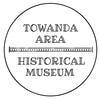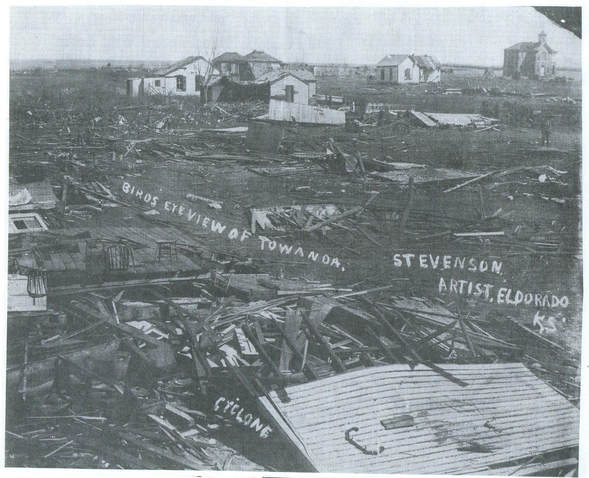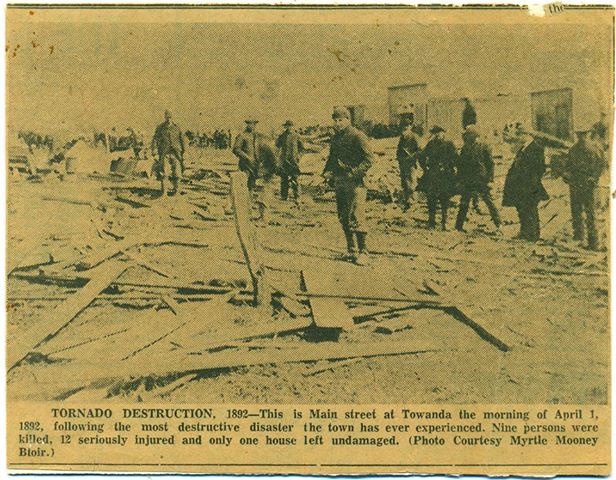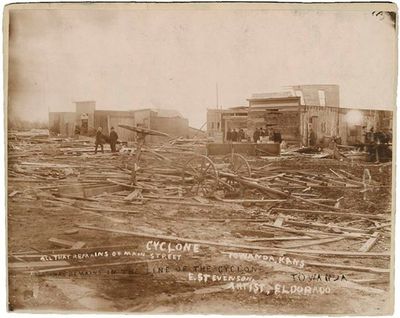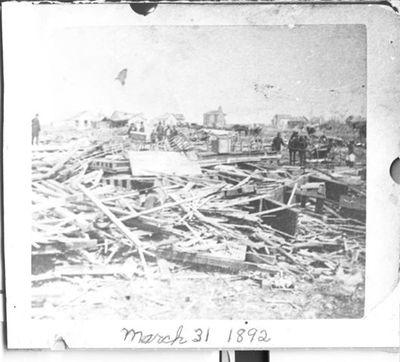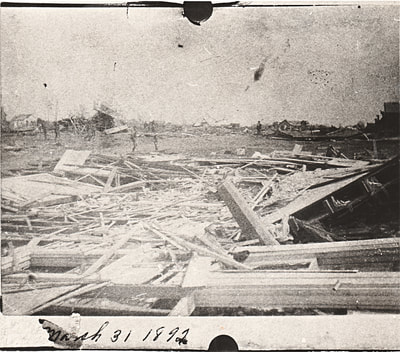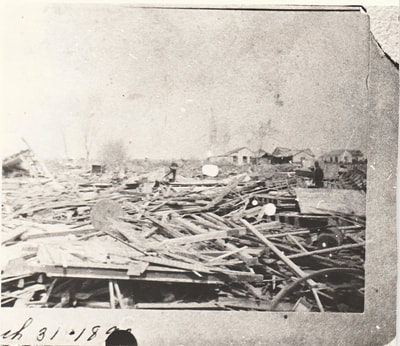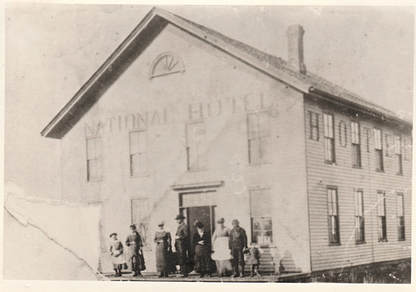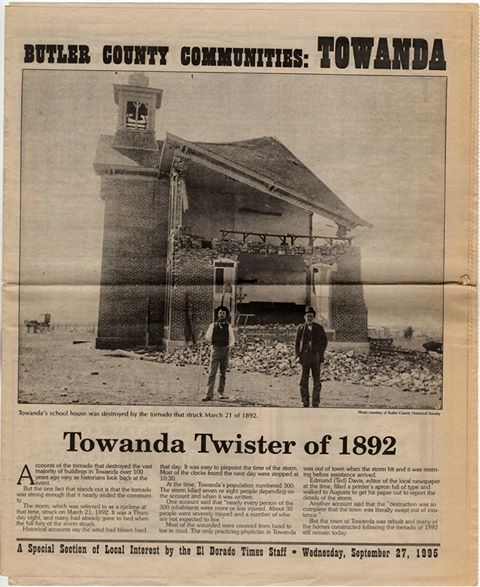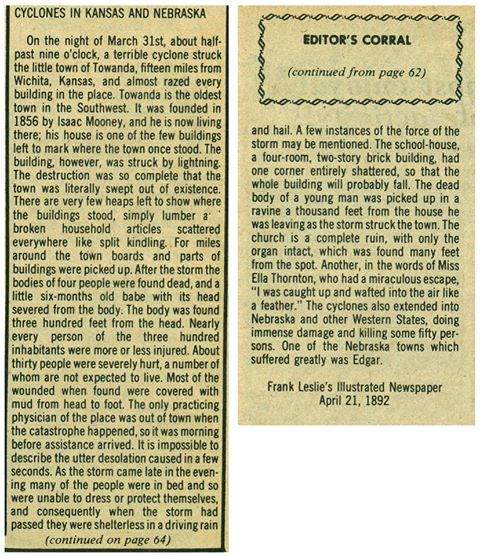The Towanda Cyclone of 1892
The City of Towanda was settled in 1863 by James R Mead, as an Indian Trading Post that was know to old settlers as “Meads Ranch”. Eventually, in 1870, Rev. Isaac Mooney plotted and established the town of Towanda on the land just a quarter of a mile to the east. The first store building was erected in 1871, and the town grew into a small village with a good number of residents, said to be around 300 people at this time.
On the night of March 31, 1892 at approximately 9:30 PM, the town was struck by a forceful cyclone wiping out everything in its path, and scattering debris of boards and household items around the town in an estimated four-mile radius. Leaving next to nothing standing in its wake, the cyclone surprised the residents as most of them were laying down to bed for the night, unable to protect themselves or prepare.
On the night of March 31, 1892 at approximately 9:30 PM, the town was struck by a forceful cyclone wiping out everything in its path, and scattering debris of boards and household items around the town in an estimated four-mile radius. Leaving next to nothing standing in its wake, the cyclone surprised the residents as most of them were laying down to bed for the night, unable to protect themselves or prepare.
The devastating event killed around nine people in Towanda to include: 21 year old Herschel Cupp who was the son of Daniel Cupp. The Cupps were one of the first families to settle the area. Herschel was set to marry his love, 18 year old Miss Effie Kerr, the following June, and had just left her fathers house when the storm hit as he walked the street home. Also, sadly lost, was James Blake, the 6 month old infant son of John Blake, who was a local Merchant. The Aspen Weekly Times, out of Aspen Colorado, reported on April 9 following the tragedy, “At Towanda, the baby of James Blake was one of the victims. It met death in a terrible manner. Its body was not found until Friday noon and the searchers were horrified to see that it was without a head. It had been decapitated . . . In the temporary morgue the head and body were laid together and a narrow ribbon tied about the baby's throat would have concealed the wound. The parents of the infant were both among the very seriously wounded.” C. L. Hertcole who was found alive following the storm, but eventually succumbed to his injuries. Dr. JD Godfrey, who was a retired local physician was internally wounded and died a few hours later. William Bailey was reported to have died by strangulation. The majority of the remaining residents were seriously injured. The storm came from the direction of Wichita, passing through Towanda, leveling the the town and turned to the north at the school house, and continued on for about six more miles. It destroyed nearly every building in town, taking with it every leaf and twig on the trees.
Many accounts of the storm from the residents reached newspapers across the country as news spread. Stories of the feathers being stripped from chickens, to entire homes being picked up and slammed to pieces as the residing families clinged to their lives. Ella Thornton was quoted in Frank Leslie’s Illustrated Newspaper on April 21, 1892 saying “I was caught up and wafted into the air like a feather.” A story in the Atlanta Constitution read “Charles Anderson, living near Towanda, heard a roaring and went to the door to see what it was. As he opened the door the storm struck the house and carried it away, leaving him standing in his night clothes just where the house had been. It took the house from under his feet, and he says he never felt a breath of wind until after the tornado had passed and the force of the gale was felt again.” Another encounter, “ The family of James Gibson were standing in their door watching the storm when they saw something come rolling down the street toward them. It looked like a log, but bent and twisted in such as to excite their curiosity, and as it was stopped in a gutter near their house they went out to make an investigation after the storm had passed. It was the body of a young woman who had been stripped of every stitch of clothing except one stocking, and it was only by this stocking that they were enabled to identify her. It was that of Miss Belle Merritt, who was considered the most beautiful young lady in this part of the country. She was so disfigured that no semblance of her former self remained. She was alive when found but died within a few hours without recovering consciousness.”
Days following the disastrous storm, thousands of people flocked to the site of Towanda, on special trains running from Wichita and East from Emporia/Eldorado. Visitors contributed nearly $500 toward a relief fund. For those that couldn’t contribute money, they brought with them offerings of clothing and food for those effected citizens.
Days following the disastrous storm, thousands of people flocked to the site of Towanda, on special trains running from Wichita and East from Emporia/Eldorado. Visitors contributed nearly $500 toward a relief fund. For those that couldn’t contribute money, they brought with them offerings of clothing and food for those effected citizens.
The four room school house was a two story brick building, which was left in a state of despair with one corner entirely crushed, was eventually rebuilt. The church which was in complete ruin, aside from the lone standing organ, was eventually replaced, and the town came back to life over time. The experience forever changed the village and its residents. The courageous citizens that stayed to rebuild following this tragedy, were once again struck with horrific luck, as another tornadic storm crossed the towns path the following May of the same year. Taking down more than half a dozen of the homes that had been rebuilt. No records indicate additional loss of life from this separate May storm.
Those lost have not been forgotten, but forever a part of our towns history. This massive storm effected Towanda's timeline. Most towns of that era were less likely to survive such destructions, but Towanda wasn't finished! Perseverance by its strong Christian citizens, the town rebuilt. Commerce and trade made a moderate comeback and within the next few years, the oil boom of the century was upon us!
The Towanda Area Historical Museum does have some of the dishes that were recovered from the debris on display. Come by the Museum, as the story of Towanda awaits you!
Another clear account of this devastating piece of Towanda history can be found in a news article posted by the Wichita Daily News, included in our
"A Day in the Life" blog:
The Towanda Area Historical Museum does have some of the dishes that were recovered from the debris on display. Come by the Museum, as the story of Towanda awaits you!
Another clear account of this devastating piece of Towanda history can be found in a news article posted by the Wichita Daily News, included in our
"A Day in the Life" blog:
